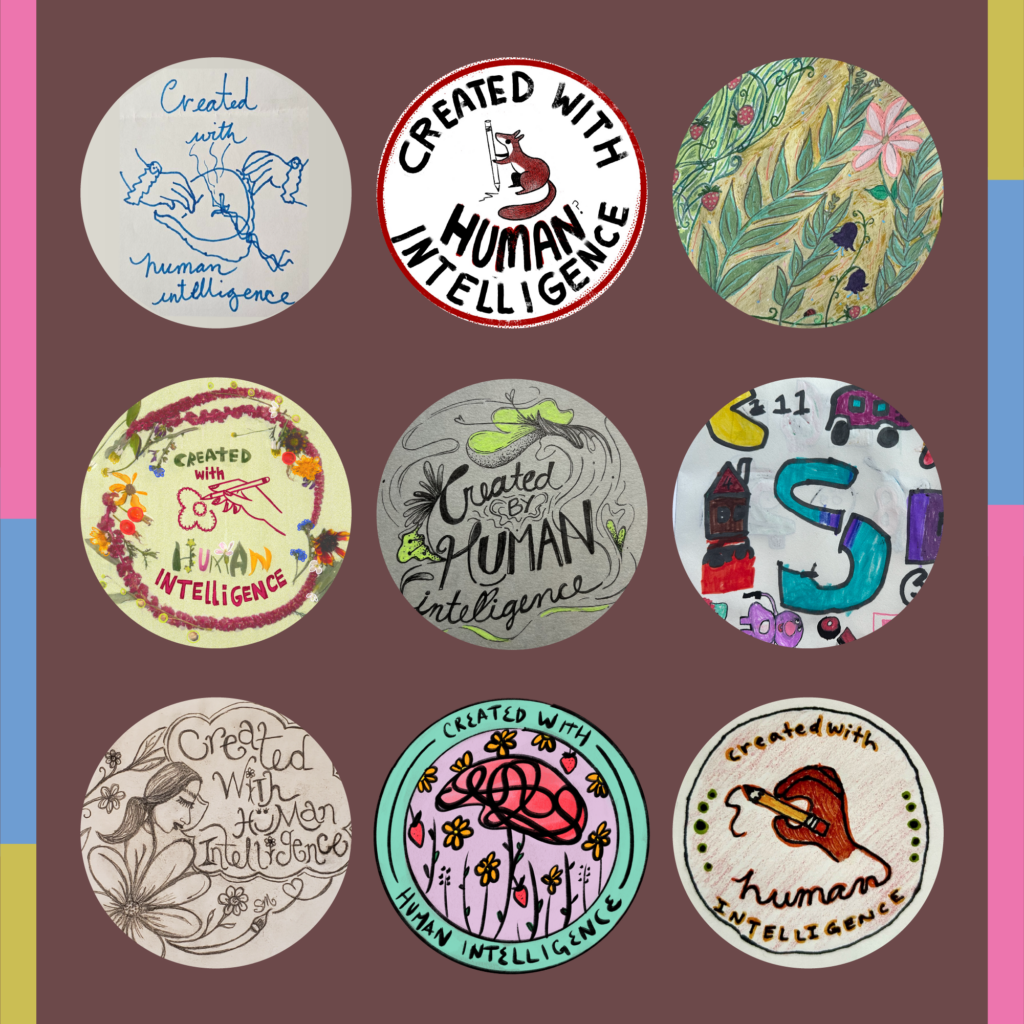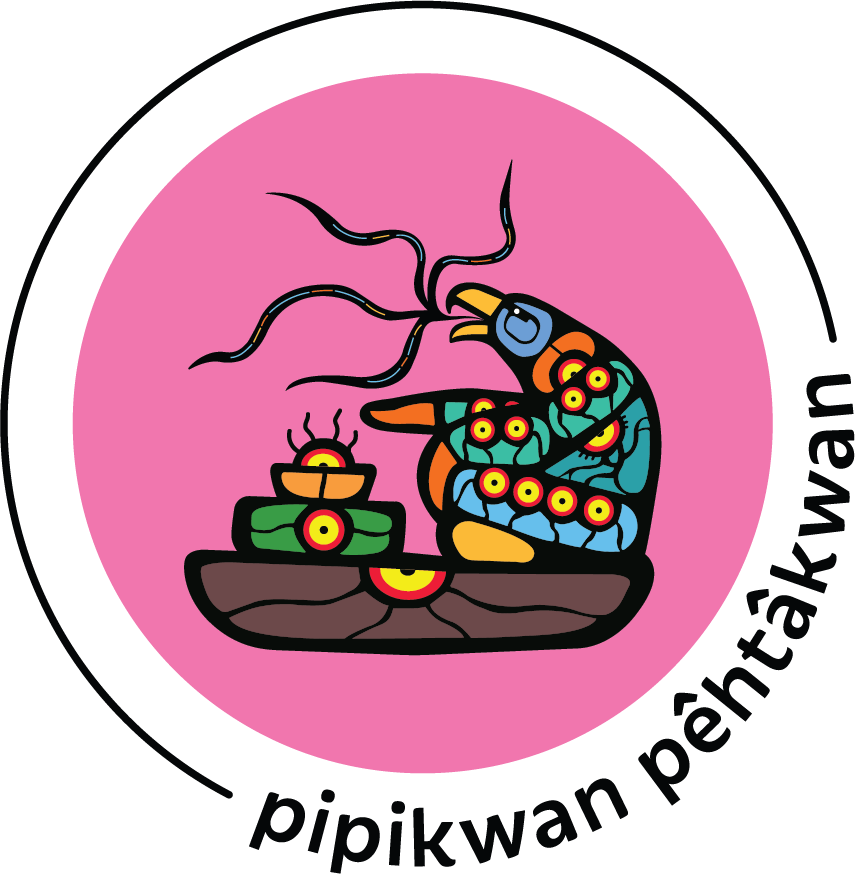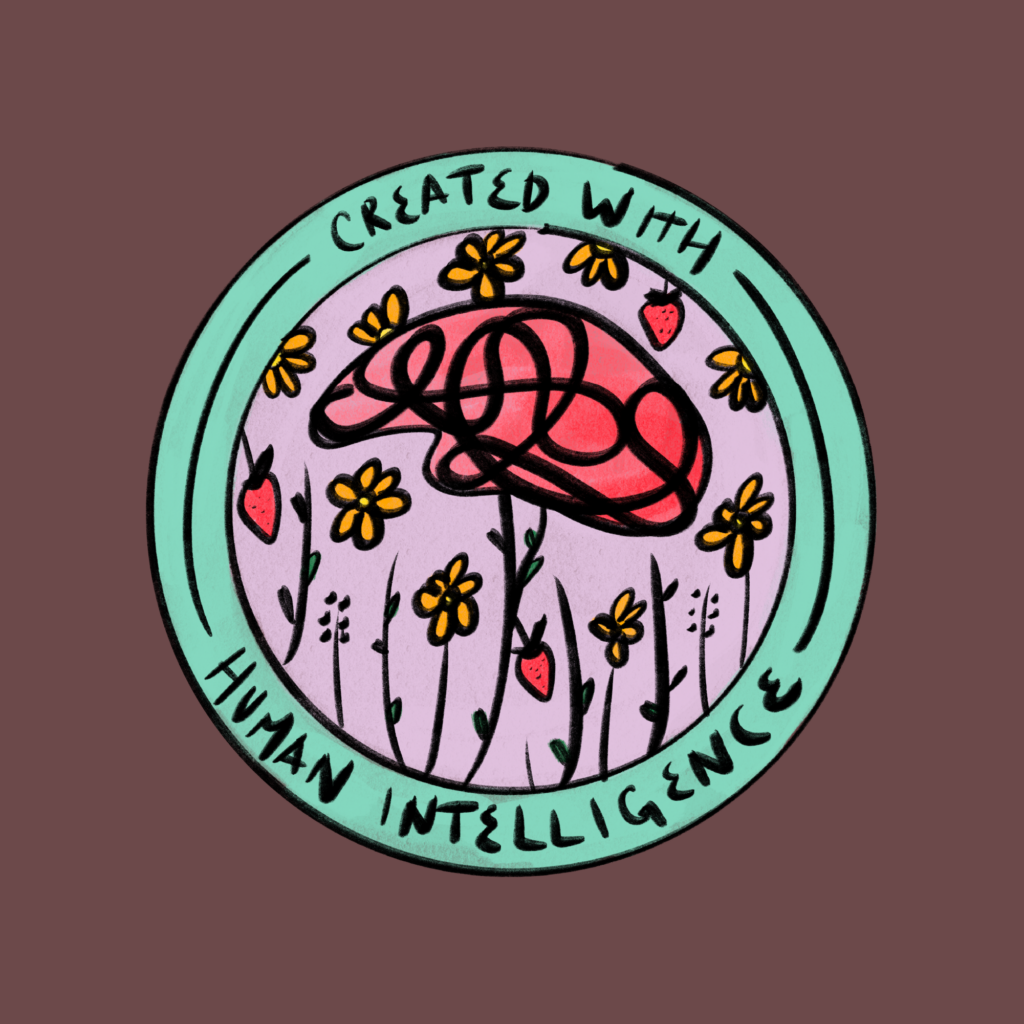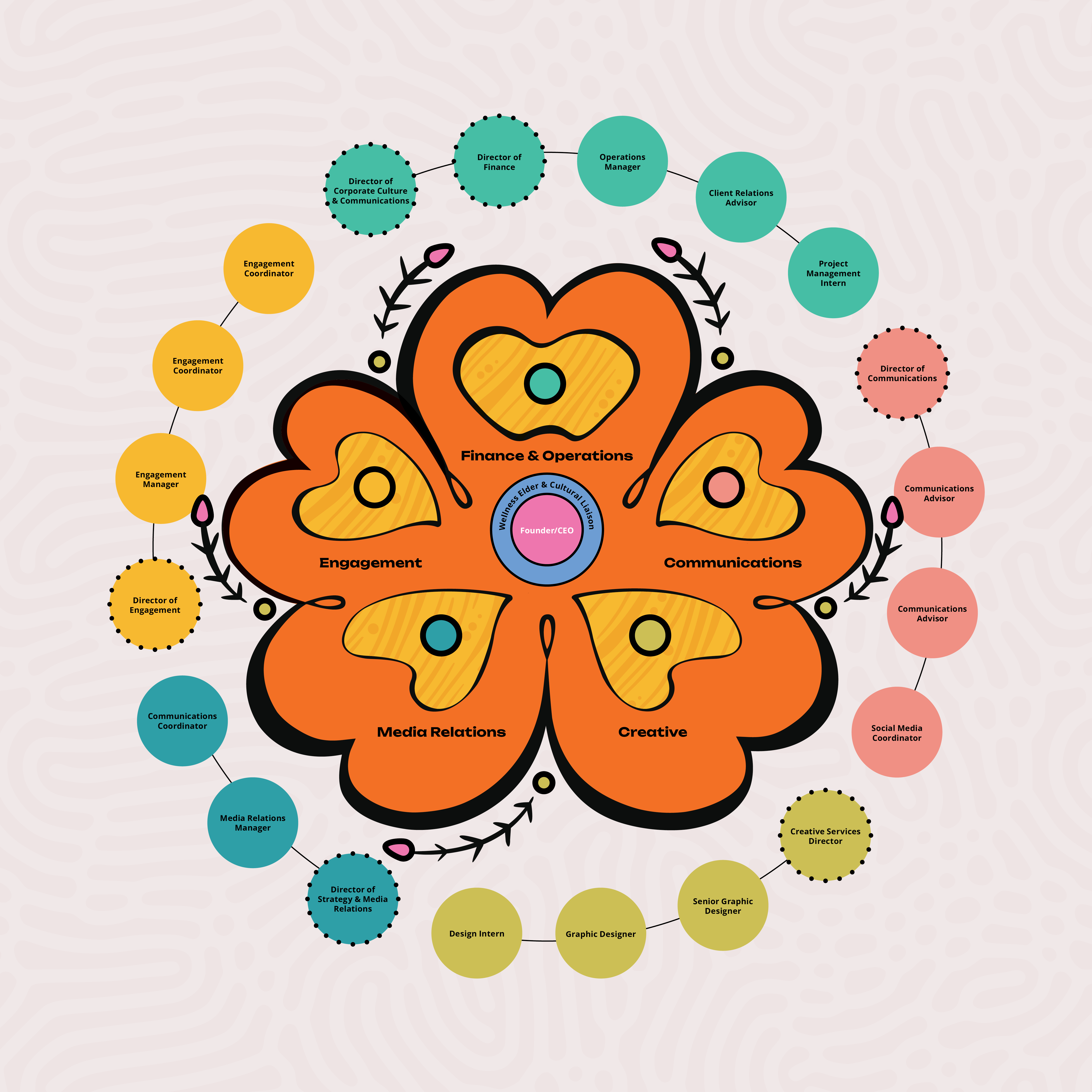by Presley Mills, Creative Director
Human intelligence is the only creative expression we trust
pipikwan pêhtâkwan does not currently use Generative AI – it is an uninformed, unregulated tool unable to meet the needs of our clients, protect artists or protect Indigenous cultures in its current state.
As an Indigenous agency, we are constantly working to decolonize our design process and our overall approach to creative work. This means questioning why things were always done this way and leaning into curiosity. We are treating artificial intelligence (AI) the same way – by asking questions about this technology being so aggressively imposed upon us. We question why corporations are eagerly using AI without hesitation. Why is it suddenly being pushed into every aspect of our lives? Why are there messages that AI is inevitably going to take over our work? Why is AI being incorporated into software, where it clearly harms its users?
The tech companies promoting AI seem to want us all to feel like it’s already here and that we should get used to it. Much of the AI technology currently available seems to be focused on generative images or video. We thought AI was supposed to do things like diagnose cancer early. Art and craft are already deeply undervalued. Whether it be due to capitalism, racism, misogyny, or appropriation, we can now add to that list the trend of AI Art promising instant results with zero-skill training and ultra-efficiency – further devaluing creative work and its role in our lives.
Change is inevitable, but we have power over how we respond to change. We have heard other agencies sympathize that AI may take jobs however they are more excited about increasing efficiency. We have heard others declare that AI democratizes design or creativity – but creativity is already democratic and free. There is value in taking time to develop skills and process ideas independently or with your community to express emotions, spirituality, teachings, connection and the many other beautiful aspects of the human experience by thinking critically. In our work, the time spent learning, listening and processing the stories, needs, and perspectives of our clients is what creates art that evokes emotion, has meaning and connects with audiences at a meaningful depth unmatched by AI.
The people saying “AI is here, get used to it” are the same types of people Indigenous folks have been resisting for generations in order to protect our way of life. The authority on most AI projects is colonial. Governments and major corporations leading the development of AI control how it is regulated, and who is involved in building and informing it. From our agency’s perspective, Indigenous Peoples have been excluded from AI development which increases the risk of dangerous and negative impacts on our community. There is a new system being built – a critical piece of infrastructure that will impact every minute of our day, yet it’s being built just like every other colonial and oppressive system to date – with the perspective of the dominant culture. Indigenous People across the lands often say there cannot be anything for us, without us. Discussions are happening around regulations, ethical standards, and Intellectual Property rights, but compared to AI technology, these policy changes and protections are moving at a glacial pace.
Our philosophy at pipikwan pêhtâkwan is that AI would be an incredible helper to replace the tasks people don’t want to do or struggle with – like physically or mentally dangerous work, tedious and unrewarding work or supporting technical experts with the most accurate and up-to-date information. In some cases, AI is being used in this way and it has a lot of potential to improve our lives. For example, our organization is working on an AI writing tool wasikan kisewatisiwin to correct unconscious bias or racism directed to Indigenous Peoples in written materials and therefore reducing the emotional labour required of them to challenge and correct problematic statements. What is alarming about the information AI has about Indigenous People, as it stands now, is it is providing responses that can further the harm and misinformation about our communities. We do not need another oppressive system inserting colonial and racist perspectives about Indigenous People into creative work – whether it be written, visual or audio. Artificial Intelligence is not ready to provide written or artistic materials for public consumption unless you’re signing up for an experience that inherently favours cis, able-bodied white men.
Over the past year, the creative team has been educating ourselves on AI tools, attending AI and tech-focused conferences, and having deep discussions about the implications and impact of this new technology on our work. We have many concerns related to AI and its impact on our planet and society.
- We are concerned about the environmental impact of AI software. Our research was inconclusive on just how broad of an impact the processing power of AI can potentially make on our planet, but we are aware of the extreme energy and resources required. From our perspective, to keep the planet safe and our homes livable we should be making responsible and informed decisions on how energy is used. What is the environmental impact of generating thousands of AI Shrimp Jesus images?
- Images created through AI are not eligible for copyright because it fails the human authorship requirements under current law. “AI art” is created through data collection by ‘scraping’ the information from existing artwork. This means that inherently, every image created is done so through theft. An important aspect of our work is protecting artists and avoiding appropriation and stereotypes. It is difficult enough to be an artist in this society and now artists have to worry about showcasing their work online for sale because AI is busy copying and reproducing it at a lower cost to large corporations. Not cool.
- The irresponsible use of AI has deep impacts on media literacy and online safety. There are countless examples of deep-fake porn or false images being used for political purposes. The current system does not have appropriate protections in place to keep people safe.
- We can always spot AI and we think it just doesn’t look good. Sure, it’s getting better, but it’s doing so through the theft of real artists’ work.
When we think of our team’s creative process, we are reminded of the story from Robin Wall Kimmerer in “Braiding Sweetgrass: The Gift of Strawberries”. Her story tells of how the wild strawberry grown as a gift from Mother Earth always tastes sweeter and more special than the big agriculturally grown strawberries. They may be smaller and impossible to grow in bulk – but that is what makes them a unique, special and generous gift. Though the practice of graphic design is not the same as gifting, we think of our approach as filled with the same love and care as a sweet wild strawberry. It may grow slower, it may be more challenging to find in the large field, but the relationship is stronger and the energy and spirit of the product are therefore more valuable.
Our team has a weekly creative circle, where we share our current work – get feedback, share technical and cultural knowledge. This is the joy of being creative: learning new skills, honing your craft, learning from others, expressing something from within, and building relationships. Generative AI takes that away. When we saw the drawing prompt trend “Created with Human Intelligence”, we connected with the intention behind the idea. The artist who started the trend, Beth Spencer, said an interview with Fast Company, “being human is hard. There isn’t any software that has experienced the struggles and joy that fuel our art”. We feel for the younger generations who are interested in art and pray this current trend of AI artwork doesn’t hinder their drive, inspiration or hope to pursue creative work in a good way. Our team and some of their family members each made their own “Created with Human Intelligence” badge for the joy of creating. We encourage you to make and share your own too.
The feeling across pipikwan pêhtâkwan is that the use of AI to replace the creative process does not align with our values. Above all we value collaboration and relationships built through our creative process using Keeoukaywin – the Visiting Way. We rely on sharing stories and creating feelings through our design work – the clients’, designers’, writers’, Elders’, and communities’ voices must be heard along the way.
The human touch is a signature of our work. As an organization we have made a commitment to not use any generative artificial intelligence in the development of any creative work.





